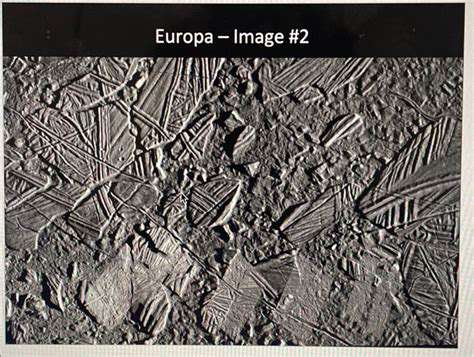
The Mission's Genesis
The Kepler space telescope, a revolutionary mission in the field of exoplanet discovery, was launched by NASA in 2009. Its primary objective was to detect Earth-sized planets orbiting other stars, known as exoplanets, within the habitable zone. This involved a sophisticated method of observation, relying on the transit method to detect subtle dips in a star's brightness as a planet passes in front of it. This innovative approach allowed Kepler to survey a vast area of the sky, searching for these telltale signs of planetary transits.
The Kepler mission aimed to revolutionize our understanding of planetary systems beyond our solar system. It sought to answer fundamental questions about the prevalence of planets, the diversity of planetary systems, and the potential for life beyond Earth. This ambitious undertaking required a specialized spacecraft equipped with precise instruments and a highly developed observing strategy. The quest to find life beyond Earth has been a driving force in scientific inquiry for centuries, and Kepler played a key role in this ongoing exploration.
Exoplanet Discoveries and the Habitable Zone
Kepler's groundbreaking observations have yielded a wealth of data on exoplanets. The mission has confirmed the existence of thousands of exoplanets, expanding our understanding of the vastness and diversity of planetary systems. These discoveries have challenged conventional models of planet formation and highlighted the remarkable variety of planetary architectures.
Kepler's focus on the habitable zone—the region around a star where liquid water could potentially exist on a planet's surface—has been crucial in the search for potentially habitable worlds. The identification of planets within this zone has significantly advanced our understanding of the potential for life beyond Earth. Scientists are now able to focus their research on these promising candidates, further refining the search for extraterrestrial life.
Impact and Legacy
The Kepler mission's impact extends far beyond the discovery of exoplanets. Its data has provided invaluable insights into the structure and evolution of planetary systems, inspiring further research and development in the field of astrophysics. Kepler's legacy lies in not only its numerous discoveries but also the profound impact it has had on our understanding of the universe and our place within it.
The Kepler mission's findings have sparked a new era of exoplanet research, prompting the development of advanced telescopes and techniques designed to further investigate the characteristics and properties of these distant worlds. The mission's success has fuelled a renewed passion for exploring the cosmos and continues to drive the search for potentially habitable environments beyond our solar system.
A Massive Inventory of Exoplanets
The Kepler Space Telescope's Unprecedented Discoveries
The Kepler space telescope, launched in 2009, revolutionized our understanding of exoplanets, the planets orbiting stars beyond our own solar system. Its primary mission, to survey a significant portion of the Milky Way galaxy, led to the discovery of thousands of exoplanets, challenging our previous assumptions about planetary systems and paving the way for future explorations. Kepler's innovative transit method, which detects planets by observing slight dips in a star's brightness as a planet passes in front of it, proved incredibly effective in identifying a vast array of exoplanets, from small, rocky worlds to gas giants.
Kepler's success was not just about quantity; it was also about the diversity of the exoplanets it found. The telescope detected planets orbiting stars in various configurations, including those orbiting in the habitable zones of their stars, regions where liquid water could potentially exist on a planet's surface. These discoveries highlighted the possibility of life beyond Earth and sparked intense scientific interest in the search for extraterrestrial intelligence (SETI). The sheer volume of data collected by Kepler has fueled countless research projects and continues to inspire new investigations into the formation and evolution of planetary systems.
Characterizing Exoplanets: A Deeper Look
Beyond simply detecting exoplanets, Kepler's data provided crucial information about their characteristics, including size, mass, temperature, and orbital period. This information is vital for understanding the diversity of planetary systems and the processes that lead to their formation. Analyzing the data has allowed scientists to create detailed models of these distant worlds, providing insights into their atmospheres, compositions, and potential habitability. These insights are crucial for refining our understanding of planetary formation and evolution, and they will be instrumental in the design of future missions to further investigate these fascinating objects.
Further analysis of the data allowed researchers to discover exoplanets in a wider range of orbits and around a variety of stars. This broadened our understanding of the diversity of planetary systems and opened new avenues for research. By studying the properties of these exoplanets, scientists are gaining a better understanding of how planetary systems form and evolve, and whether Earth-like planets are common or rare in the galaxy.
The Kepler Mission's Legacy: Shaping Future Research
The Kepler mission's legacy extends far beyond the thousands of exoplanet discoveries. The wealth of data collected has provided a foundation for future missions, such as the Transiting Exoplanet Survey Satellite (TESS) and the James Webb Space Telescope (JWST). These missions are designed to build upon Kepler's work by observing exoplanets in greater detail, potentially leading to the discovery of even more planets and the characterization of their atmospheres. Kepler's data has also stimulated the development of new technologies and analytical techniques for detecting and studying exoplanets, setting the stage for exciting discoveries in the coming years.
The Kepler mission has undoubtedly changed our understanding of the cosmos and has fundamentally shifted our perspective on our place in the universe. The insights gained from Kepler's data will continue to shape and drive future research, ensuring that the search for exoplanets and the quest for understanding our place in the universe remain at the forefront of scientific exploration for years to come. The sheer quantity of data collected has become a treasure trove for astronomers worldwide, fueling years of research and discoveries.
The impact of Kepler extends beyond academic circles. It has captured the public's imagination, inspiring awe and wonder about the vastness and diversity of the universe. Its discoveries have stimulated public interest in science and technology, motivating future generations of scientists and engineers to pursue careers in space exploration.


The Future of Exoplanet Exploration: Building on Kepler's Legacy
Expanding the Search: Beyond Kepler's Capabilities
The Kepler space telescope revolutionized our understanding of exoplanets, identifying thousands of potential worlds. However, Kepler's transit method, while incredibly successful, had limitations. Future missions, building on Kepler's legacy, will need to address these constraints and explore new avenues for discovery. This means employing a combination of techniques, including direct imaging, radial velocity measurements, and advanced statistical modeling to identify and characterize a wider range of exoplanets, potentially even those orbiting smaller stars or in more complex planetary systems.
Characterizing Atmospheres: Unveiling Planetary Compositions
One of the most exciting frontiers in exoplanet exploration is the characterization of exoplanetary atmospheres. Future missions will focus on analyzing the light that passes through these atmospheres, seeking to identify the presence of specific molecules, such as water vapor, methane, or carbon dioxide. This information will be crucial in determining the habitability potential of these worlds and understanding the processes that shaped their formation and evolution. Analyzing the subtle variations in light will enable scientists to discern the composition of gases and potentially even the presence of clouds.
Direct Imaging: Seeing Exoplanets Directly
Directly imaging exoplanets is a challenging but potentially highly rewarding endeavor. Future telescopes, equipped with advanced adaptive optics and coronagraphs, will be capable of blocking the glare from their host stars and imaging exoplanets in unprecedented detail. This will allow scientists to study the physical characteristics of these planets, such as their size, mass, and temperature, in a way that is not possible with transit or radial velocity methods. Detailed images will also reveal the surface features, potentially even the existence of rings or moons.
Improving Detection Sensitivity: Hunting for Smaller Worlds
Future exoplanet missions will need to increase their sensitivity to detect smaller, Earth-like planets orbiting distant stars. This will require more powerful telescopes and more sophisticated data analysis techniques. The ability to detect smaller planets is crucial for identifying potentially habitable worlds, as smaller planets are more likely to be found in the habitable zones of their stars. Advanced algorithms will be used to filter out false positives and enhance the signal-to-noise ratio in astronomical observations, leading to more accurate detection and characterization of exoplanets.
Advanced Statistical Modeling: Interpreting Complex Data
The sheer volume of data generated by future missions will necessitate the development of advanced statistical modeling techniques. These models will help scientists to sift through the vast amount of information to identify patterns and trends that might otherwise be missed. Analyzing the data from multiple missions will require sophisticated algorithms capable of integrating information from diverse sources, leading to a comprehensive understanding of the distributions of exoplanets in our galaxy. This will help us to identify the most promising targets for future study.
Developing New Instruments: Pushing Technological Boundaries
The development of new and innovative instruments is crucial for advancing exoplanet exploration. Future missions will require more powerful telescopes, more sensitive detectors, and more sophisticated data analysis tools. This will necessitate significant investment in research and development, pushing the boundaries of engineering and scientific understanding. New instruments will allow us to collect more detailed data, providing a more comprehensive understanding of exoplanets, their characteristics, and their potential for harboring life.











